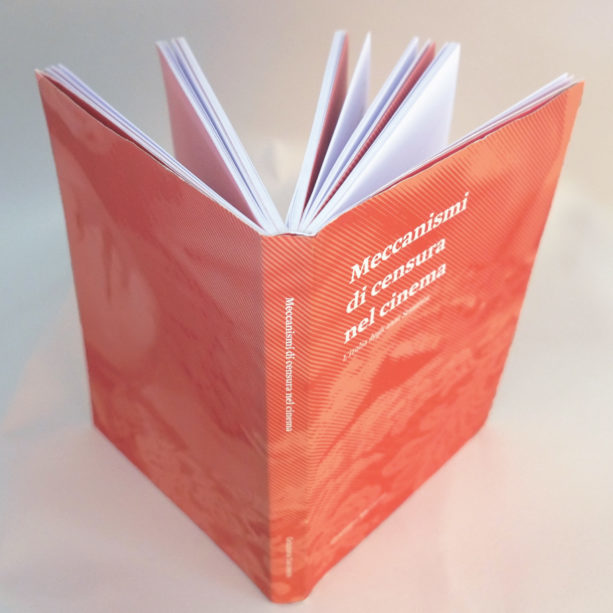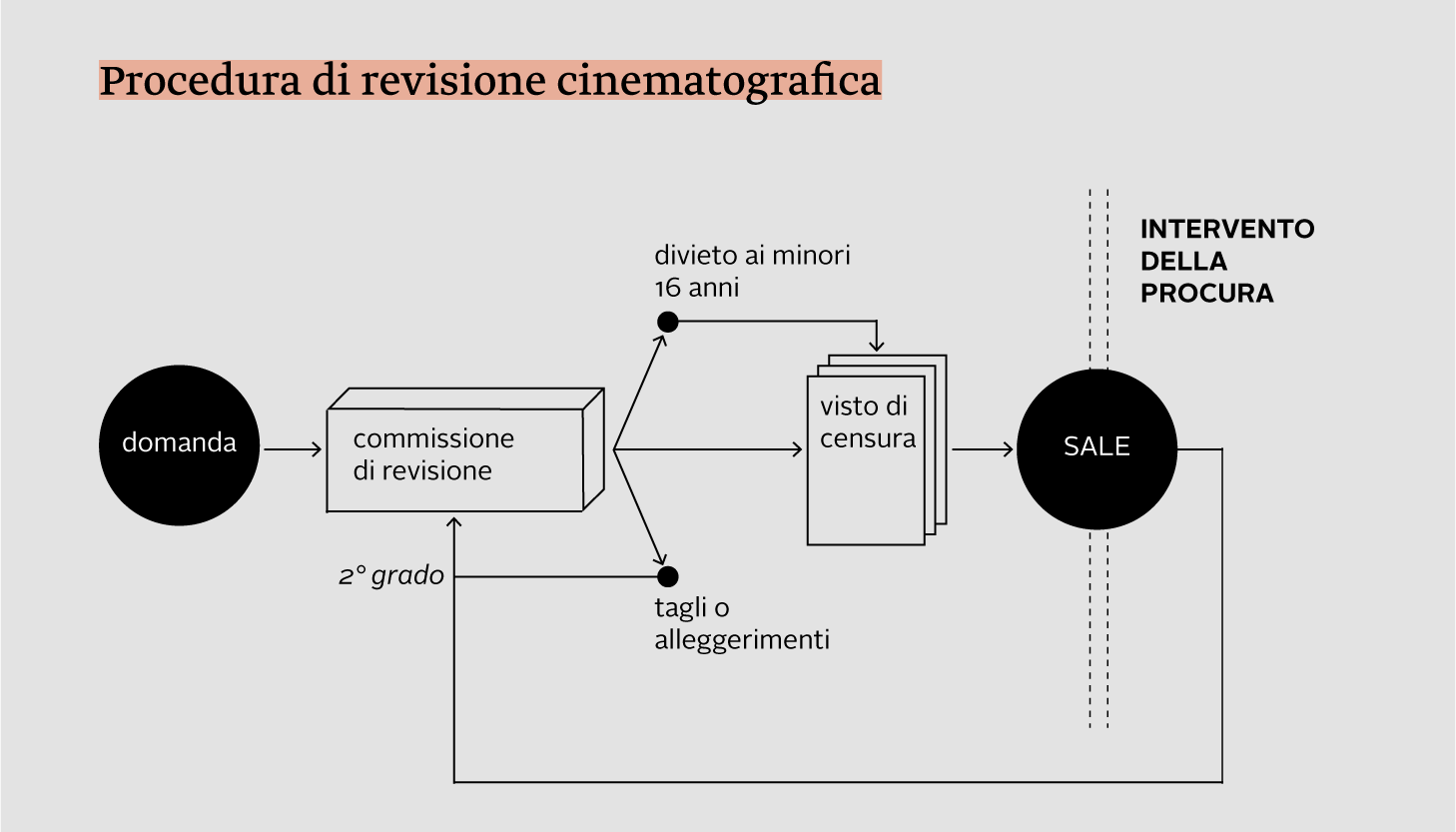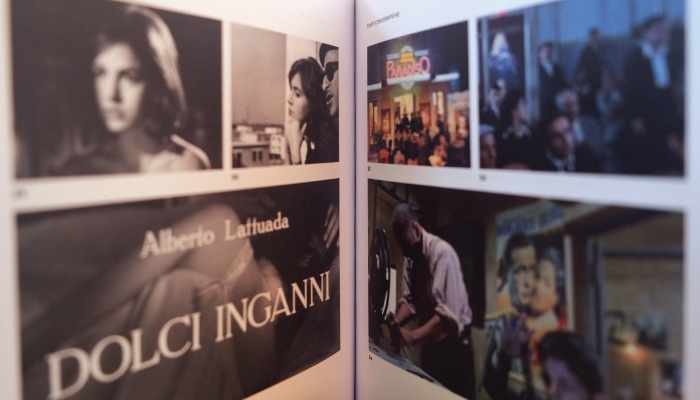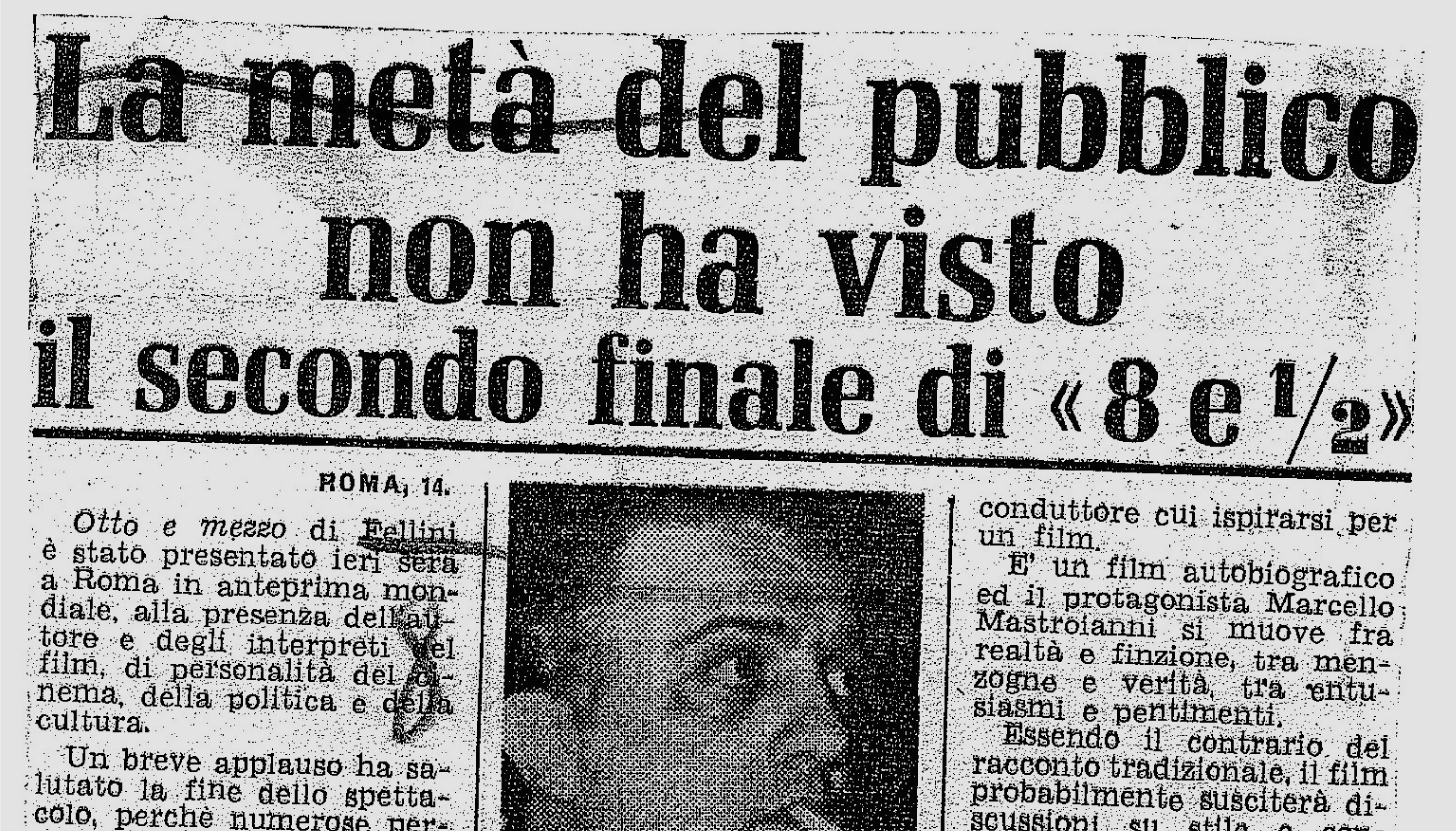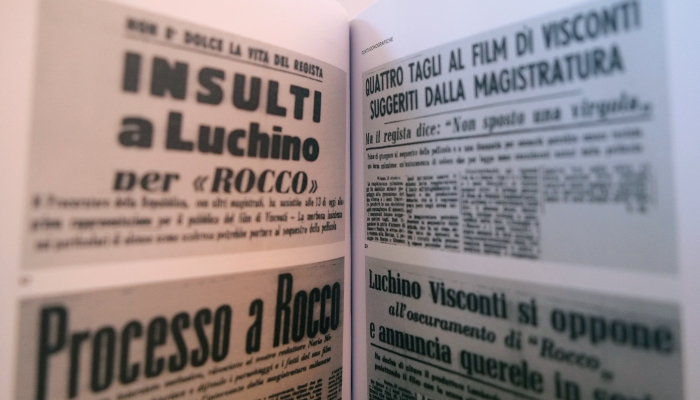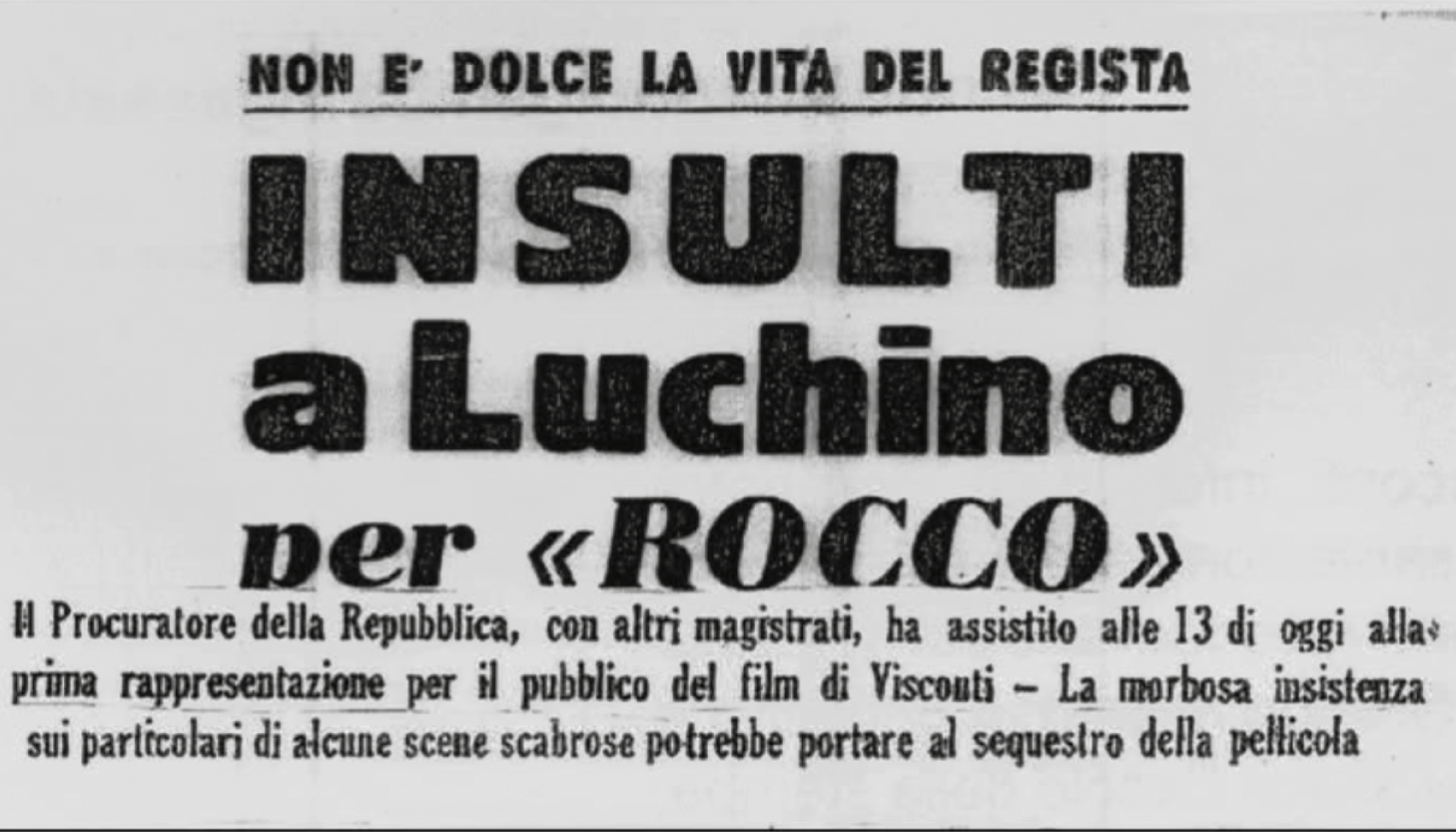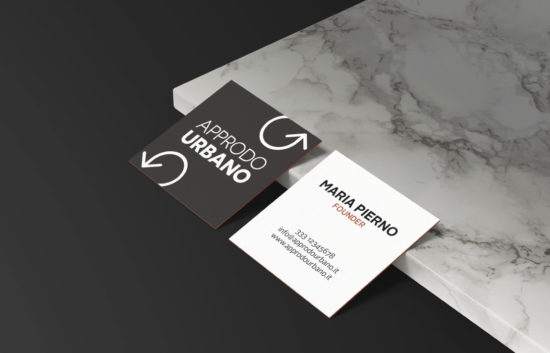Theory of Documentary Film · Thesis
IUAV University of Venice · Visual and Multimedia Design
Supervisor : Marco Bertozzi
Year : 2014
The research presented on these pages, starts from the idea that the Italian cinema is parallel linked to the history of censorship and the evolution of its law. In particular, it examines the decade of the Sixties, as a period full of crucial events in our country, from a political, economic and cultural point of view.
The analysis begins from the reconstruction of the historical path made by the Italian movies production, in relation to some aspects of general transformation of society, which will inevitably affect the choices of directors and few film production company.
It is necessary also elaborate the topic of censorship through a brief legal history, to understand the evolution of its parameters and the methods of control over the movies themselves. The thesis therefore aims to clarify the operation of the movie review as an instrument of power, with the possibility of an influential work on the film, which is expressed through the visa of censorship.



Such considerations are also useful to open a reflection on the ability of the film to overcome the obstacles imposed by the censors devices, thanks to tools like the creative editing or a variety of “special effects”.
The matter is further enlarged with the concept of “additive censorship”, in other words a theory that the action of censorship can be interpreted, on the one hand on its appearance of abduction or mutilation, and on the other hand as well as a contribution to the affirmation of certain aesthetic values and language in the cinema.
We can then consider the complaint not only as a device issued by an administrative body, but how widespread practice of “subjectivity” of the mechanisms within the movie censors.
Finally, this argument is demonstrated through the analysis of two case studies, one isRocco e i suoi fratelli, by Luchino Visconti and the other is 8 1/2 by Federico Fellini, which suffer both attempts at censorship by film production company, with the aim of manipulating some sequences, and giving them a new meaning.
